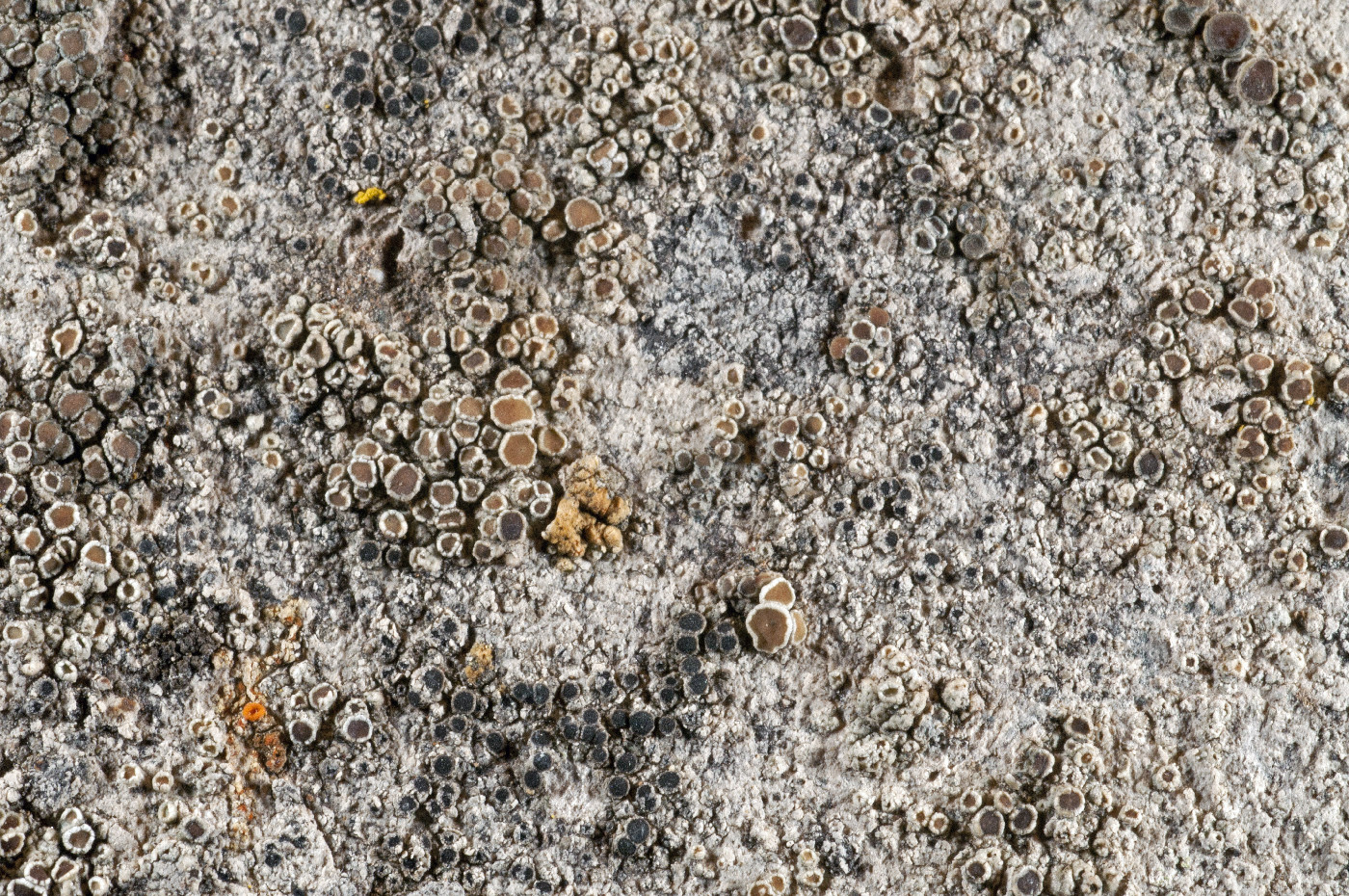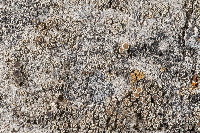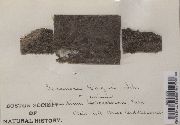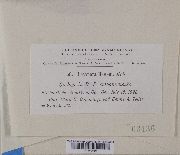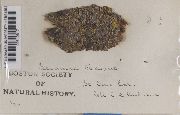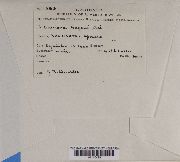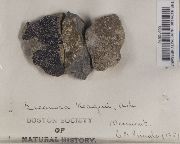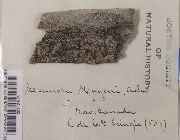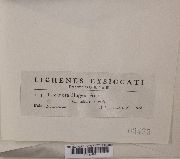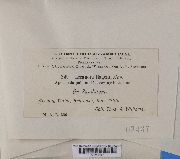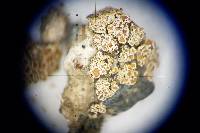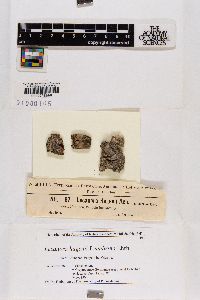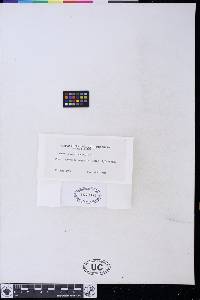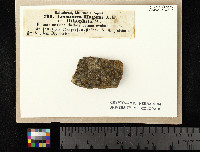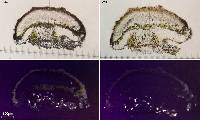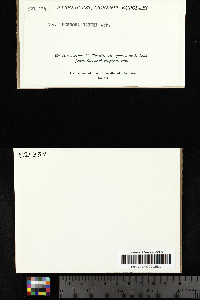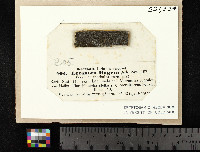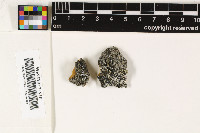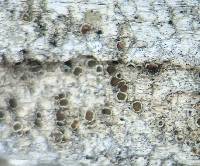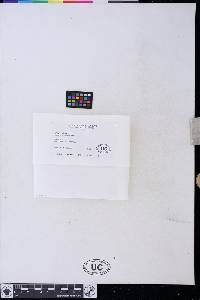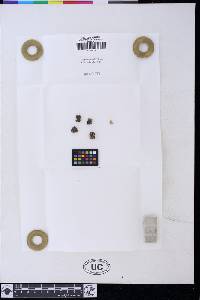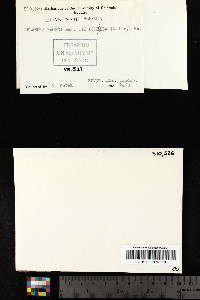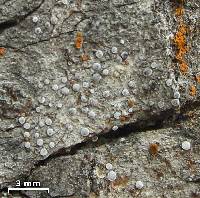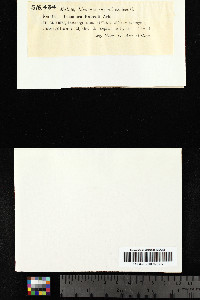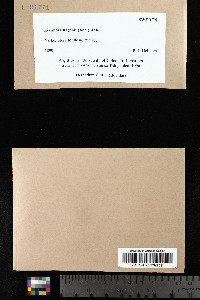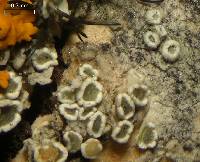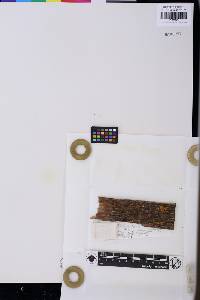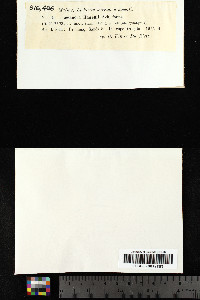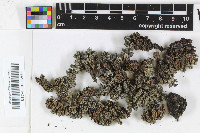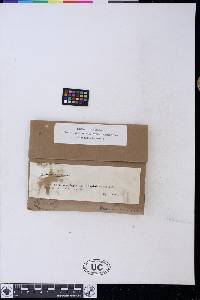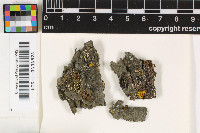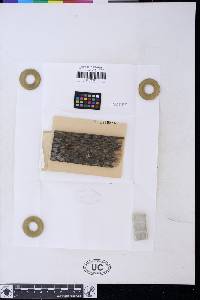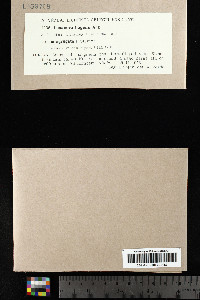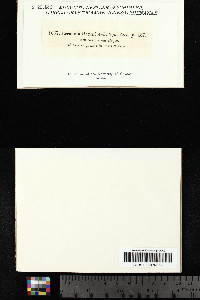
Consortium of Lichen Herbaria
- building a Global Consortium of Bryophytes and Lichens as keystones of cryptobiotic communities -
- Home
- Search
- Images
- Species Checklists
- US States: O-Z >
- US National Parks
- Central America
- South America
- US National Parks
- Southern Subpolar Region
|
|
|
|
Family: Lecanoraceae
[Berengeria hagenii (Ach.) Trevis., moreLecanora hagenii (Ach.) Ach., Lecanora hagenii f. hagenii (Ach.) Ach., Lecanora hagenii subsp. hagenii (Ach.) Ach., Lecanora hagenii var. fallax Hepp, Lecanora hagenii var. hagenii (Ach.) Ach.] |
Nash, T.H., Ryan, B.D., Gries, C., Bungartz, F., (eds.) 2004. Lichen Flora of the Greater Sonoran Desert Region. Vol 2. Thallus: within substrate, not visible (endophloedal or endolithic) Apothecia: occurring singly or clustered in groups, sessile, flat when mature, 0.3-0.9 mm in diam. disc: pale to dark brown, smooth, slightly to heavily pruinose or rarely epruinose margin: paler than the disc or white, prominent or even with disc, smooth or dentate, uniform, epruinose or pruinose amphithecium: present, with algae filling or not filling medulla, algal layer (75-90 µm thick) continuous and extending below the hypothecium; cortex: indistinctly delimited, uniform in thickness or differentiated (16-20 µm thick laterally and 20-60 µm thick basally, composed of adglutinated, gelatinous hyphae; obscured with granules throughout or granules sparse, more abundant only on top of margin (pol+, insoluble in K, soluble in N) epihymenium: in shades of yellow or brown, indistinctly granular; granules: superficial, pol+/-, insoluble in K and soluble in N hymenium: hyaline, 4060 µm tall; paraphyses: simple, thick, slightly expanded or capitate, brown pigmented at tips, usually free in K; subhymenium: hyaline, indistinct; hypothecium: hyaline or almost so, composed of adglutinated hyphae, 20-50 µm thick asci: clavate, 8-spored ascospores: hyaline, simple, ellipsoid, 8.9-13.3 x 4.5-5(-5.9) µm Pycnidia: not seen Spot tests: all negative Secondary metabolites: none detected. Substrate and ecology: on wide range of organic substrate (bark of trees, wood, bones, mosses, vegetation or other lichens), occasionally also directly on rocks or concrete World distribution: cosmopolitan on most continents Sonoran distribution: Arizona and California. Notes: Lecanora hagenii is closely related to L. crenulata but is distinguished by its smaller apothecia with much thinner apothecial margins, which are entire to dentate rather than cracked. Lecanora hagenii also has a considerably thinner amphithecial cortex, shorter hymenium and paraphyses, which are less coherent in K. The taxon was previously assumed to be similar to L. dispersa, but Lecanora hagenii differs by the following anatomical characters: (1) by the lack of L. dispersa-type epihymenial granules, (2) by having paraphyses that are simple and thicker with enlarged tips, and (3) by usually having more narrowly ellipsoid spores. In contrast to L. dispersa, L. hagenii does not produce any lichen compounds. For comparison with L. wetmorei, see notes under that species. Laundon (2003) proposed using the name L. umbrina (Ach.) A. Massal. instead of L. hagenii. The former name is based on L. hagenii var. umbrina Ach. from BM; however, there are three varieties in the original Acharius collection in H available: var. cyanescens, var. umbrina and var. syringea, and it is not clear that Laundon's L. umbrina applies to all that material. The concept of L. hagenii used here is based on features of var. cyanescens. |
|
|
|
Powered by Symbiota

